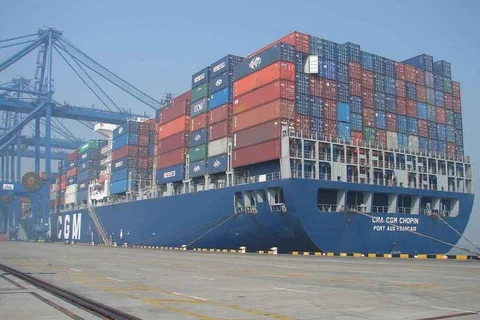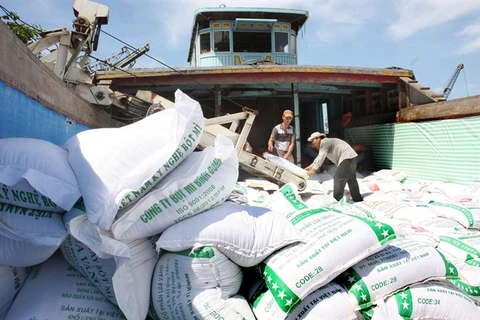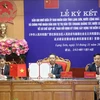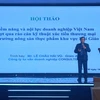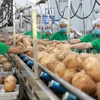Hanoi (VNA) – The export growth target of 10 percent for 2016 is unlikely to be achieved if no breakthrough solution is taken, experts have said, noting challenges face the country such as technical barriers and trade protection measures due to the elimination of import duties under new-generation free trade agreements set to be signed this year.
According to the Ministry of Industry and Trade, Vietnam recorded export growth of 5.3 percent in the first seven months of 2016, much lower than the 9.2 percent of the same period last year.
This was attributed to fluctuations in import markets, experts said, adding that many countries have strengthened technical barriers and applied stricter regulations on food safety, quality, and goods origin.
Vietnam’s rivals such as Thailand, Indonesia and India are competing in quality and price, they said.
Rice, for example, fetched 1.32 billion USD from shipping 2.93 million tonnes abroad from January-July, down 18.4 percent in volume and 14.4 percent in value year-on-year, according to the Ministry of Agriculture and Rural Development.
The reduction was attributable to weak demand and instable production under the impacts of drought and salt water intrusion during the first half of this year, said Secretary General of the Vietnam Food Association Huynh Minh Hue, adding that key importers like China and other Asian countries (accounting for 70-75 percent of the market) imported less rice in the seven-month period.
Similarly, the garment-textile and footwear industry faces several difficulties. As of July 2016, the sector only fulfilled half of its yearly export target of 17 billion USD. The current growth of below 6 percent is the lowest over the past 10 years.
Chairman of the Vietnam Textile and Apparel Association Vu Duc Giang said businesses are facing fierce competition and transport cost hikes. Added to this are shortcomings of domestic management policies on materials quality and the use of machinery and equipment.
Truong Dinh Hoe, General Secretary of the Vietnam Association of Seafood Exporters and Producers, highlighted difficulties that the seafood sector is facing such as weather, prices and administrative procedures on imported spices and additives.
Despite the setbacks, the sector grossed 3.2 billion USD in revenue in the first half of 2016, a year-on-year rise of 4 percent, he said.
Shrimp exports increased 5 percent to reach 1.35 billion USD, Hoe said, adding that the free trade agreement with the Republic of Korea, which comes into force in 2016, has had positive impacts on shrimp exports to this market.
He added that while the FTAs with the EU and the TPP are yet to take effect, demand from relevant markets has picked up.
Minister of Industry and Trade Tran Tuan Anh said food safety and hygiene is the primary standard for not only seafood but also other products, adding that besides implementing financial and monetary policies, businesses and localities should devise specific measures for individual sectors.
He vowed that the ministry will push forward with simplifying administrative procedures and creating more documents explaining FTAs to enterprises, he added.-VNA


